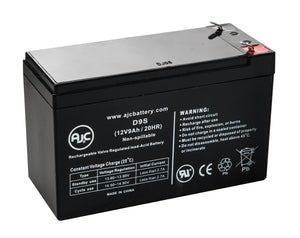SLA Battery Care
It doesn’t take much to maintain your sealed lead acid battery and prolong its life.
Sealed Lead Acid batteries have been powering our devices since the 1850s. They are inexpensive, reliable and require very little maintenance. Many people replace them when they show signs of decline such as loss of full power, but there are ways to prolong their life and delay their inevitable decline.
Store the Battery Fully Charged
Battery manufacturers recommend that you store your battery fully charged in a cool, but not cold, space. If you need to store your battery for an extended period, charge it fully about every 30 days. If you allow the battery charge to fall too low, it increases the possibility that the battery will freeze in cooler temperatures.
A low charge also contributes to stratification, which is when the sulfuric acid inside the battery separates from the water and forms lead sulfate at the bottom of the battery. Stratification reduces battery charge and will eventually lead to battery failure.
Store the Battery at a moderate temperature
The temperature at which batteries are stored is important. If it is too cold, the battery can freeze. This causes irreparable damage to the battery plates and the container and once that happens, you have no choice but to replace the battery.
Higher temperatures also affect battery life, but sometimes heat can’t be avoided. If your car is parked in the sun, it’s going to heat he battery. For every 15˚ rise in temperature, the life of a sealed lead acid battery is cut in half. Once heat has damaged the battery, the battery capacity can’t be restored.
Keep It Clean
A clean battery will have a longer life than a neglected one. Use a stiff brush to periodically remove corrosion from terminals and connectors to increase the electrical connection. Scrape the inside of connectors with a tool such as a pocket knife to get rid of soft lead and expose the bright metal beneath. You can add a thin layer of a protective lubricant to the battery posts to limit future corrosion.
Keep safety in mind while you clean your battery. Wear protective eye covering and safety gloves to avoid being harmed by possible small airborne particles or an explosion of the caustic materials inside the battery.
Will Adding Water Help My SLA Battery?
Sealed lead acid batteries are designed to be maintenance free, and as a result are, well, sealed. The seal adds a layer of safety to these batteries. During normal use, you don’t have to worry about spills or evaporation. Some people, at their own risk do unseal the batteries to perform maintenance, and prolong the life of their SLA battery, even though battery manufacturers recommend against it. If your battery is a gel battery, you can’t add water to do this additional maintenance.
If you are going to perform these maintenance steps, you must first break the seal on your battery. Once you remove the cover, you can test, and if necessary, refill the water reservoirs. When refilling your battery, use a specialized watering system for batteries to avoid splashes of acid from overfilling or overzealous filling. Overfilling can cause explosions on some batteries, which is even more reason to use a specialized filling system. Use distilled water to replace the water in your battery.
As when you are cleaning the battery, protective gear in the form of safety glasses and gloves should be worn when adding water.
Once you have finished your testing and maintenance, use a superglue to bond the cover back into place. Make sure to fully charge the battery before use or putting it back into storage.
Sealed lead acid batteries power or start many of our devices, including motorcycles, boats, wheelchairs and mobility scooters, and much more. A bit of maintenance during their lifespan will increase the amount of time between battery purchases, saving you money and putting fewer batteries into early recycling.


